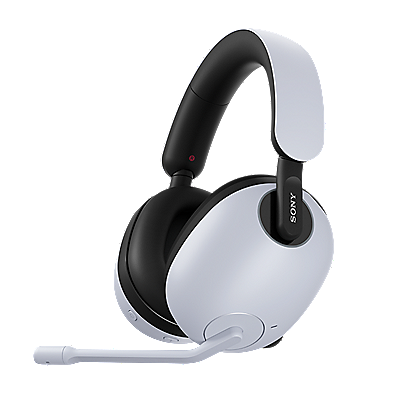Full Specifications & Features
Lens Specifications
- Mount
- Sony E-mount
- Format
- 35mm full frame
- Focal-Length (mm)
- 24-50
- Focal Length (35mm) (APS-C)
- 36-75
- Lens Groups / Elements
- 13-16
- Angle of View (35mm)
- 84゚-47゚
- Angle of View (APS-C)
- 61゚-32゚
- Maximum aperture (F)
- 2.8
- Minimum Aperture (F)
- 22
- Aperture Blades
- 11
- Circular Aperture
- Yes
- Minimum Focus Distance
- 0.19(W)-0.30(T) (AF), 0.18(W)-0.29(T) (MF) m (0.63(W)-0.99(T) (AF), 0.59(W)-0.96(T) (MF) ft)
- Maximum Magnification ratio (x)
- 0.30 (AF), 0.33 (MF)
- Filter Diameter (mm)
- 67
- Image stabilization (SteadyShot)
- - (body-integrated)
- Zoom system
- Manual
- Teleconverter compatibility (x1.4)
- -
- Teleconverter compatibility (x2.0)
- -
- Hood Type
- Petal shape, bayonet type
Size & Weight
- Dimensions (D x L)
- 74.8 x 92.3 mm (3 x 3-3/4 in.)
- Weight
- 440 g (15.6 oz.)
What's In The Box
- Hood (model):ALC-SH178
- Lens front cap:ALC-F67S
- Lens rear cap:ALC-R1EM
- Case:-

Features

A compact F2.8 zoom that is ready to go anywhere
With a 24-50 mm range that is ideal for everyday shooting, this versatile zoom offers a large F2.8 maximum aperture and beautiful rendering at all focal lengths in a remarkably compact, lightweight design. With the innovative FE 24-50mm F2.8 G you get refined large-aperture imaging performance for both stills and movies.

Superb sharpness at any focal length
An advanced optical design that includes four aspherical elements and two ED (Extra low Dispersion) elements delivers high resolution throughout the 24-50 mm zoom range. Flare, ghosting, and colour bleeding are effectively subdued for clear, detailed rendering.

Deep bokeh makes the subject stand out
A maximum aperture that remains constant at F2.8 throughout the zoom range, state-of-the-art optical design, and an 11-blade circular aperture unit all work in harmony to deliver the smooth, deep bokeh that is a hallmark of Sony’s G Lens line-up. Exquisite bokeh brings subjects to the fore.

Impressive close-up performance
Painstaking optical optimisation has achieved high close-up performance at all focal lengths. Maximum magnification is 0.3x (AF)/0.33x (MF) with a minimum focus distance of 0.19 m (0.63 ft) (AF)/0.18 m (0.59 ft) (MF) at the wide end of the range for superb close-up performance that, combined with compact size, makes this lens great for tabletop photography.

AF that maximises body potential
Two specially optimised linear motors and a precision control system acquire focus on any subject with remarkable speed and accuracy. Tracking performance is excellent, easily keeping up with Sony's advanced model α9 III body at up to 120 fps. Precise, quiet focus is smoothly acquired and maintained even when shooting high frame rate 4K 120p or FHD 240p movies.

A compact F2.8 zoom that goes anywhere
Even though it boasts a high-performance optical design with four aspherical elements and a large F2.8 maximum aperture, this lens is only 74.8 mm (3 inch) in diameter by 92.3 mm in length (3-3/4 inch). Selective use of engineering plastics enhances durability while reducing weight to just 440 grams (15.6 oz.) for agile mobility and minimum stress during long shooting sessions.

F2.8 in a mobile zoom is great for movies
Precise, quiet AF and an F2.8 aperture in a compact, lightweight zoom can be an advantage for movies. Minimal centre of gravity shift makes this lens a good choice for gimbal or drone mounting. Combined with in-body Active Mode stabilisation it can deliver stable handheld footage at wide angles while walking. Breathing compensation and metadata recording are supported.

Three control rings in a compact lens
For direct, intuitive creative control when shooting stills and movies, this lens features a full complement of three control rings: focus, zoom, and aperture. The aperture ring click stops can be turned on or off to match the shooting situation.

Comprehensive control
In addition to three control rings the FE 24-50mm F2.8 G includes a customisable focus hold button and AF/MF switch. Linear Response MF ensures immediate, intuitive manual focus control. Inner focus makes it easy to use rotatable 67 mm filters, such as variable ND types that are often used when shooting movies.

Reliable in challenging conditions
A dust and moisture resistant design maximises reliability in challenging outdoor conditions, and the front element features a fluorine coating.

Environment friendly
Sony's "Road to Zero" project aims for a zero environmental footprint by 2050. The environmental footprint of this product has been minimised from development through supply chain, production, and packaging. We are also transitioning to non-plastic packaging materials. Plant-based non-woven fabrics are used for product bags.






















